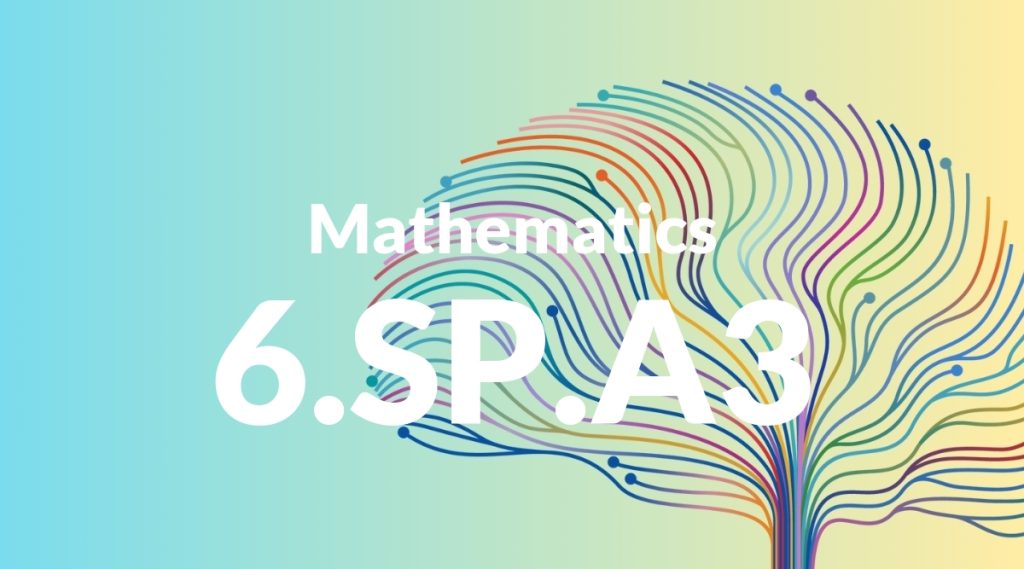Standard: 6.SP.A3 – Recognize that a measure of center for a numerical data set summarizes all of its values with a single number, while a measure of variation describes how its values vary with a single number.
Grade level: Grade 6
Subject: Mathematics
Domain: Statistics & Probability
Teacher Overview
This standard focuses on helping students understand how a single number can summarize a set of numerical data and how another number can describe the variation within the data. This understanding is crucial as it lays the foundation for more advanced statistical concepts and real-world data analysis. Students should be comfortable with basic arithmetic and familiar with the concepts of mean, median, and range. They should also have experience working with numerical data sets.
After mastering this standard, students will be able to interpret more complex data distributions, understand standard deviation, and apply these concepts to real-world problems, enhancing their statistical literacy.
Common Misconception 1
A common misconception is that the measure of center is the most frequent number in a data set. This is incorrect because the measure of center can be the mean or median, which are calculated differently from the mode.
Intervention 1
To address this misconception, use visual aids and concrete examples to show the difference between mean, median, and mode. Provide practice problems that require students to calculate each measure for various data sets.
Common Misconception 2
Another misconception is that a single outlier significantly changes the measure of center. While outliers can affect the mean, they do not usually change the median. Understanding this helps students grasp the robustness of different measures of center.
Intervention 2
Use data sets with and without outliers to show their impact on the mean and median. Discuss why the median is more resistant to outliers and provide practice problems to reinforce this concept.
Prerequisite Knowledge
Students should understand basic arithmetic operations, be familiar with numerical data sets, and have an introductory understanding of mean, median, and range.
Subsequent Knowledge
Students will develop skills in interpreting more complex data distributions, understanding standard deviation, and applying statistical concepts to real-world problems.
Instructional Activities
- Calculate the mean, median, and range for different data sets.
- Create visual representations of data sets to compare measures of center and variation.
- Analyze real-world data sets to identify measures of center and variation.
- Discuss the impact of outliers on the mean and median using examples.
- Conduct a class survey and summarize the data using measures of center and variation.




